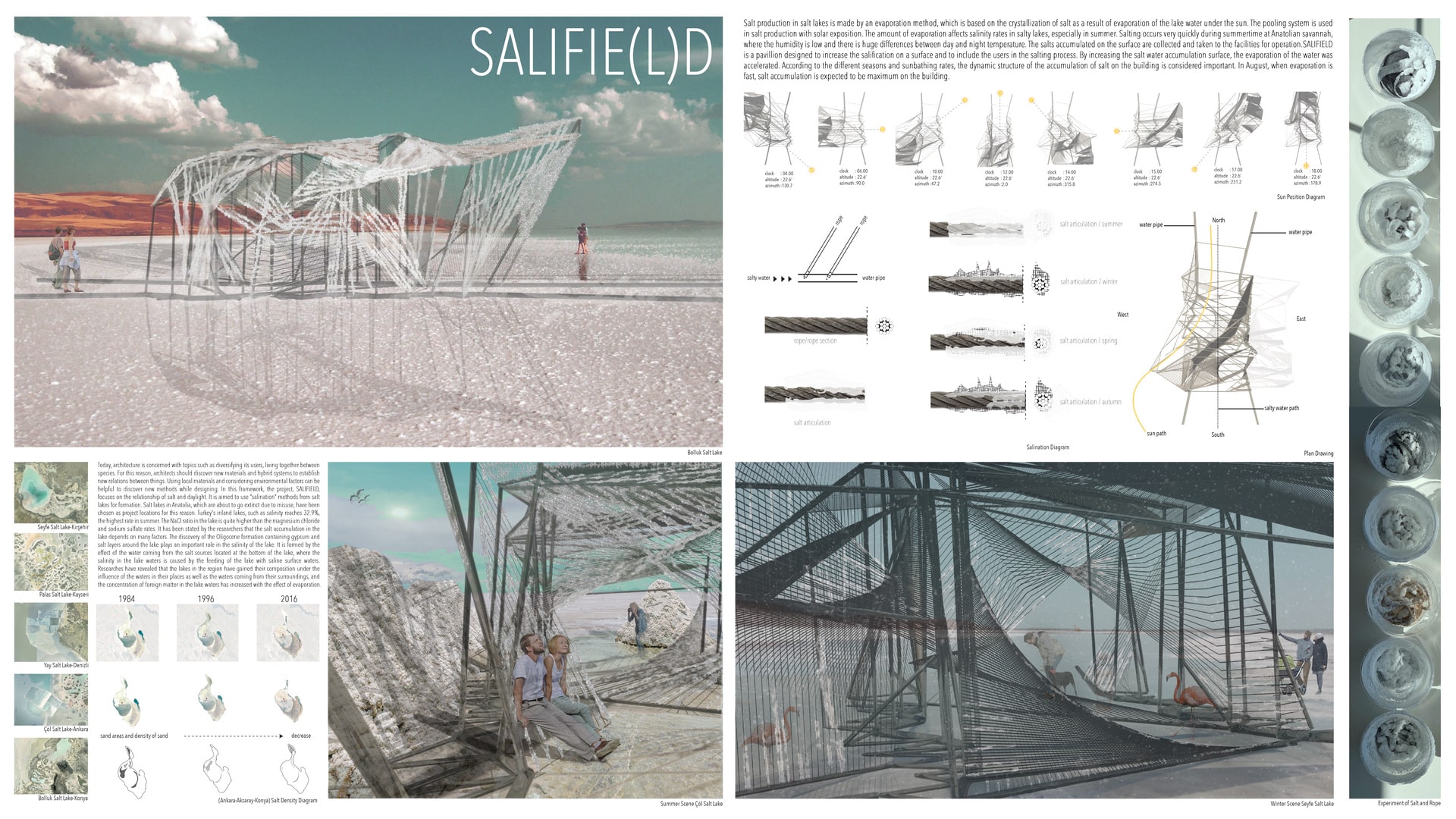Project Description
Today, architecture is concerned with topics such as diversifying its users, living together between species. For this reason, architects should discover new materials and hybrid systems to establish new relations between things. Using local materials and considering environmental factors can be helpful to discover new methods while designing. In this framework, the project, SALIFIELD, focuses on the relationship of salt and daylight. It is aimed to use “salination” methods from salt lakes for formation. Salt lakes in Anatolia, which are about to go extinct due to misuse, have been chosen as project locations for this reason. Turkey's inland lakes, such as salinity reaches 32.9%, the highest rate in summer. The NaCl ratio in the lake is quite higher than the magnesium chloride and sodium sulfate rates. It has been stated by the researchers that the salt accumulation in the lake depends on many factors. The discovery of the Oligocene formation containing gypsum and salt layers around the lake plays an important role in the salinity of the lake. It is formed by the effect of the water coming from the salt sources located at the bottom of the lake, where the salinity in the lake waters is caused by the feeding of the lake with saline surface waters. Researches have revealed that the lakes in the region have gained their composition under the influence of the waters in their places as well as the waters coming from their surroundings, and the concentration of foreign matter in the lake waters has increased with the effect of evaporation. The number of saline Lakes in Turkey reaches fifty but just eight (Tuz Gölü, Palas Tuzla Gölü, Yay Gölü, Çöl Gölü, Tuzla Gölü, Seyfe Gölü, Bolluk Gölü) of them can produce salt. Salt production in salt lakes is made by an evaporation method, which is based on the crystallization of salt as a result of evaporation of the lake water under the sun. The pooling system is used in salt production with solar exposition. The amount of evaporation affects salinity rates in salty lakes, especially in summer. Salting occurs very quickly during summertime at Anatolian savannah, where the humidity is low and there is huge differences between day and night temperature. The salts accumulated on the surface are collected and taken to the facilities for operation. SALIFIELD is a structure designed to increase the salification on a surface and to include the users in the salting process. By increasing the salt water accumulation surface, the evaporation of the water was accelerated. According to the different seasons and sunbathing rates, the dynamic structure of the accumulation of salt on the building is considered important. In August, when evaporation is fast, salt accumulation is expected to be maximum on the building.
